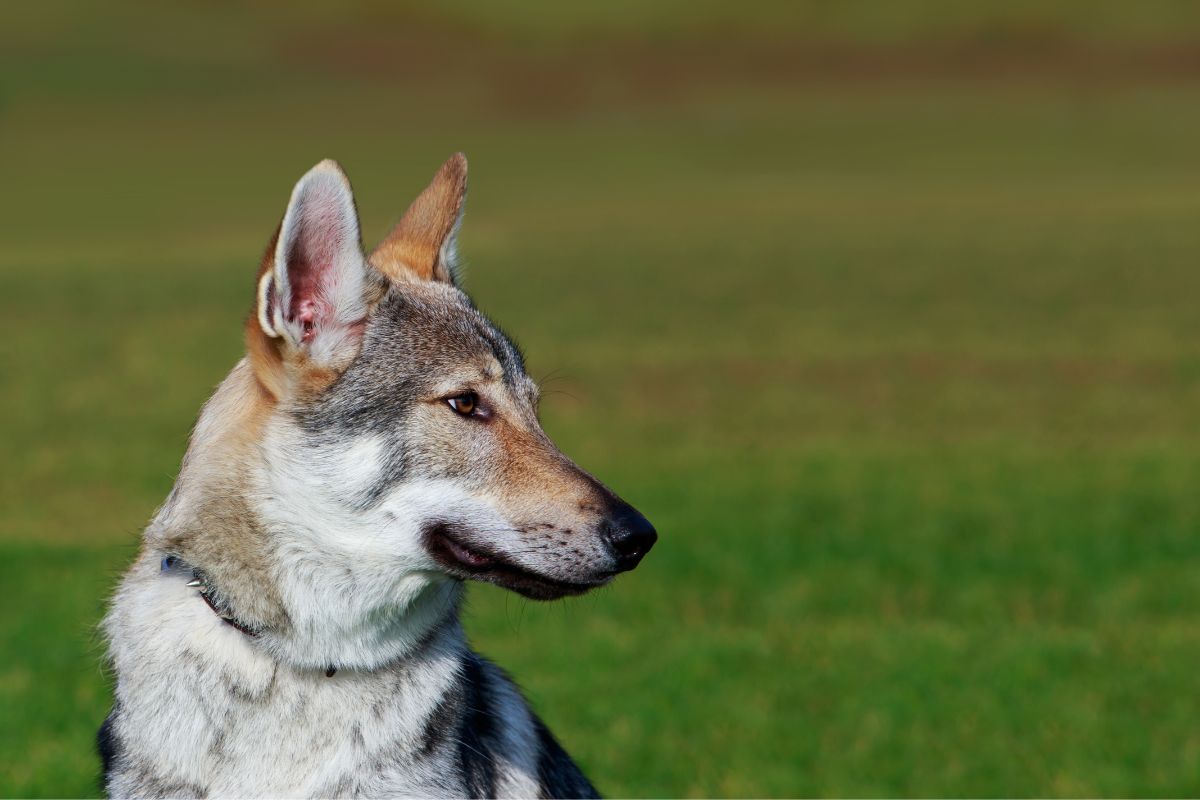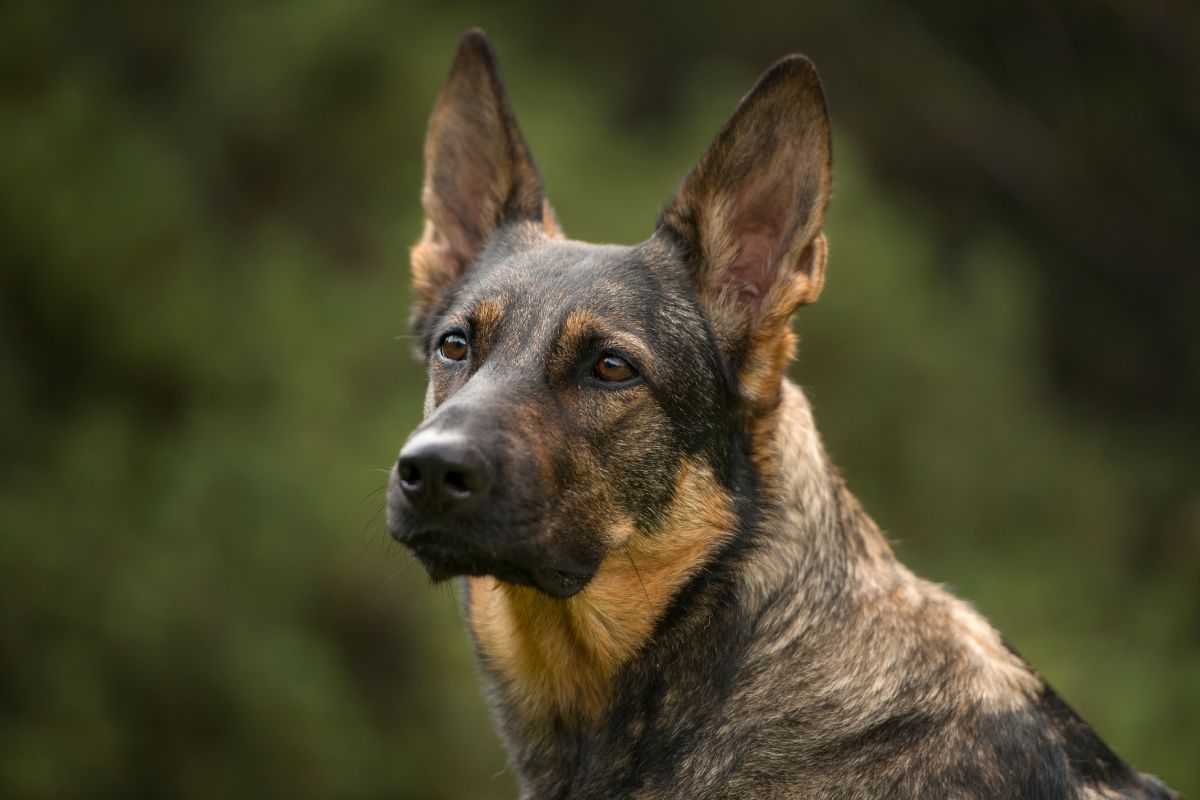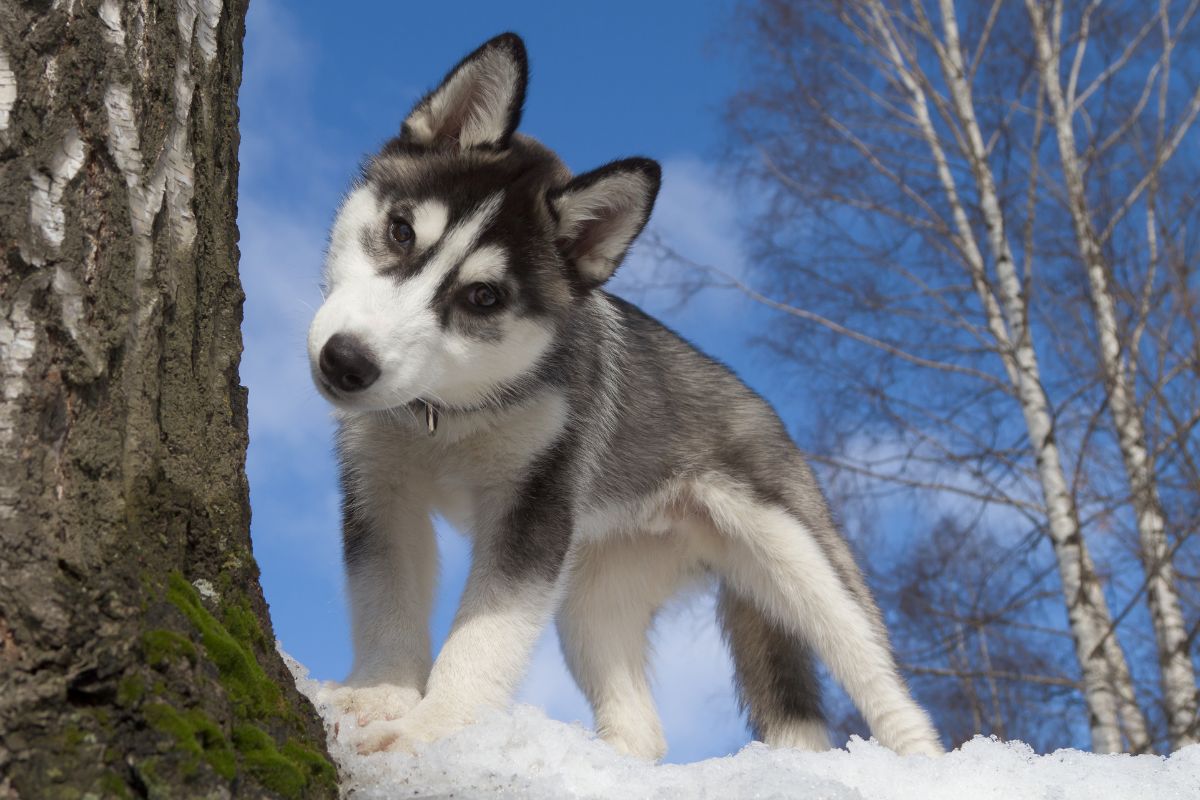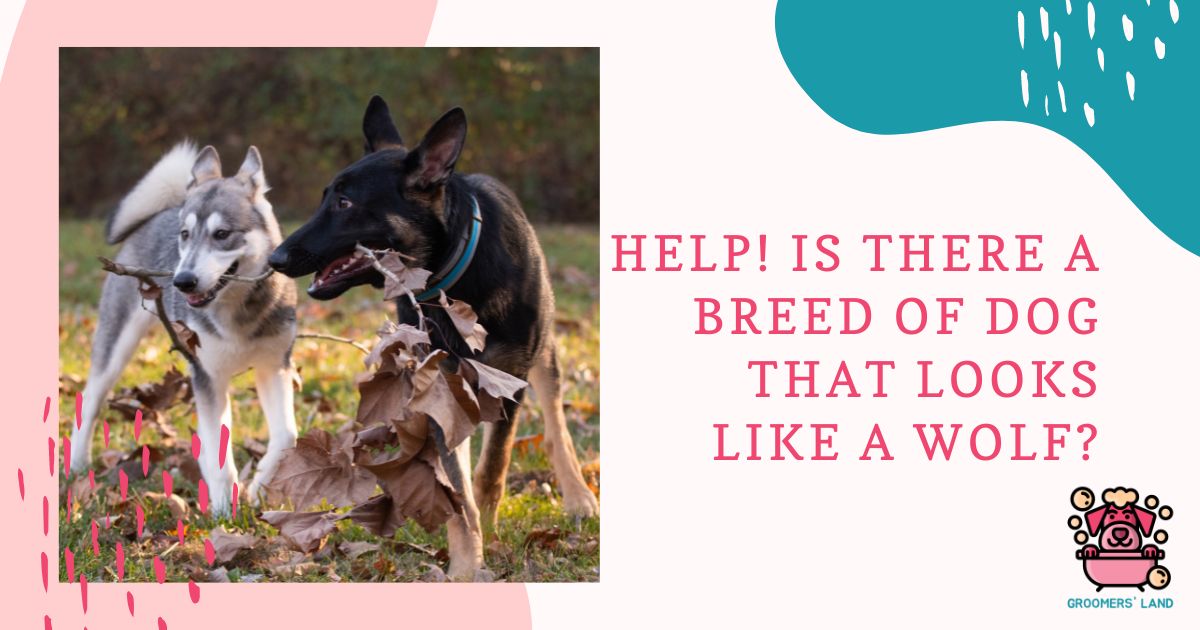Are Wolves and Dogs Related?
Have you ever come across a dog that looks like a wolf? Probably, yes! Wolves and dogs share plenty of similarities; after all, they descend from a common ancestor. Researchers believe these two species have more than 98.8% similar DNA.
So, which breeds of dogs most closely resemble wolves? This article highlights popular breeds of half-wolf dogs. Keep reading to find out more.
What is a Wolf Dog?
If you have seen a breed of dog that looks like a wolf, you must have wondered how they come about. A wolf dog is a dog and wolf mix produced by mating these two species to form a hybrid. Although wolf dogs tend to be extremely intelligent, independent-spirited, and energetic, they are unsuitable for traditional first-time dog owners.
Dogs and wolves are interfertile. These two species can interbreed and produce hybrid offspring. While wolf hybrids can happen naturally in the wild, they are highly uncommon since wolves tend to protect their territories from intruding canines like dogs.
Is There a Dog Breed That Looks Like a Wolf?
Yes! There are several breeds of dogs that look like wolves, with thick fur, pointed muzzles, and bushy tails. You’ll be happy that these wolf-like dogs make fantastic family pets. They are energetic and love playing games and long walks with their owners. Here are a few popular wolf dog breeds you can find around:
Alaskan Klee Kai
The Alaskan Klee Kai is a perceptive small-sized companion dog that is also vibrant and inquisitive but timid around strangers and in strange environments. It has a flat top line, a length that is slightly longer than its height, and a smooth, agile, and well-balanced stride.
Their arctic lineage is visible in its wedge-shaped head, upright triangle-shaped ears, well-furred double coat, three symmetrical contrasting color variants, and loosely curled tail. Despite this wolf-like creature’s small size, the Alaskan Klee Kai has a great personality.
They build close ties with their family and are curious, intellectual, and energetic. However, Alaskan Klee Kai is frequently distrustful and reserved. Get prepared for the wolf-like woo that spitz-type dogs produce when excited if you bring the Alaskan Klee Kai home. More so, this wolf-dog breed is easier to train than Huskies.

Alaskan Malamute
The Alaskan Malamute is an equally attractive wolf-like dog with a strong will, just like the Husky. Alaskans are bigger and a little fluffier and skilled sledders as well. They love to spend their time running, hiking, and taking in everything the earth offers.
These wolf-looking dogs are playful, amiable, and happy pets. They are quite strong due to their muscular body. Also, Alaskan Malamutes, often called Mals, are heavy-duty, dignified, and dedicated canines deemed important because of their capability to pull huge sleds over long distances in difficult arctic circumstances.
Although Alaskan Malamutes are friendly and biddable, they still require a lot of socialization and gentle training. An unruly lump of a Mal (weighing approximately as much as a Gray Wolf) won’t be simple to handle.
American Alsatian
American Alsatians, often called American Wolf dogs are huge companion dogs with many shades of brown, black, and white fur. They are shaggy dogs with piercing yellow eyes that look much like wolves. American Alsatians frequently feature in films when scenes require wolf-like dogs.
These dogs are docile, kind, and gentle, even though their lineage includes genuine working dogs like German Shepherds, Alaskan Malamutes, Anatolian Shepherds, Great Pyrenees, and English Mastiffs. Because of this, modern American Alsatians would much rather spend their days relaxing and having fun with their loved ones than working.
Canadian Eskimo Dog
Canadian Eskimo dogs are medium-sized dogs with enormous, triangular ears and black, amygdaliform eyes that give them an unmistakable wolf-like aura. Also known as Canadian Inuit dogs, this breed of dog is native to the Arctic and Canada. It is a breed of working dog.
Canadian Eskimo dogs have a huge husky or malamute-like build. They have little, pointed ears and wedge-shaped heads. Their almond-shaped eyes are dark brown. As is customary for Huskies, their tail folds over the back. Although they grow to their peak size in about a year, Canadian Eskimo dogs typically mature at three years old.
Canadian Eskimo dogs also have a distinctive rough, double-coated coat. They have white, brown and white, gray and gray and white, red and white, and black and white fur. This breed of dog blow coats semi-annually.
Canadian Eskimo dogs have a strong pack instinct that can test their owners. They are amiable toward people but hostile toward dogs not part of their pack. If not trained, they may even fight. These canines have a lot of energy. Also, they have bad chewing and digging habits.
Sadly, Canadian Eskimo dogs are in danger of going extinct. There are only about 300 purebreds left, according to the most recent viable census.
Czechoslovakian Vlcak (CSV)
The Czechoslovakian Vlcak (CSV) is a dog breed most closely resembling its wolf cousins. This unique breed resulted from interbreeding between a German Shepherd and a Carpathian Wolf in the 1950s. Czechoslovakian Vlcak dogs served the Czech military in border patrol and were super strong workers.
While intelligent, fiercely loyal, and athletic, they are not suitable as first-time dog owners’ pets. They require much exercise and engagement to keep themselves occupied and out of trouble because they are independent, distant from strangers, and have a short attention span.
Today, Czechoslovakian Vlcak dogs are popular in Europe and the US for working, sports, and tracking. Their obedience and agility nature makes them ideal for drafting and search and rescue missions. They are far more autonomous compared to other working breeds. Additionally, they have high adaptability and resilience in tough environments.
Czechoslovakian Vlcak dogs are great companions for energetic owners who love outdoor activities like bicycling, running, or hiking.

Finnish Lapphund
The Finnish Lapphund, or Lappies, is a traditional weatherproof reindeer herder for the Sami. Also known as Lapp, you can easily confuse it for a silky-coated Susi (wolf in Finnish). They are as smart, brave, friendly, and quiet as wolves.
Lappies are remarkably large and strong for their size, standing around 1.67 feet (20 inches) tall at the shoulder. They are swift and agile, easily moving and transitioning quickly from trotting to full galloping.
Lappies are affectionate and obedient companions, albeit slightly cautious of strangers. Most Finnish communities love this breed as their pets. Finnish Lapphunds thrive in canine sports like herding trials and yearn for intimacy with their family.
German Shepherd
German Shepherds are one of the most prevalent wolf-type dogs and the second most popular dog breed in the US. They are born heroes who are intelligent and devoted and enjoy missions. No work is too difficult for their diverse skills, whether a search and rescue operation, guide, or assistance assignment.
Although it has a wolf-like appearance, this popular dog actually acts like the best canine companion you’ll ever have. They make excellent family dogs for older kids because of their protective temperament. They will be the boisterous dog reminding you why you love dogs so much as long as there is a lot of activity nearby.
Nevertheless, if they don’t have anything to do, they’ll quickly start getting into mischief, so make sure you constantly have activities and challenges for them to complete. They have double fur coats and come in various colors, like their lupine forebears.
German Shepherds are typically loving and cuddly pets to their puppies and people they consider family. Also, they have smart, fast minds.
German Shepherds can, however, vent their annoyance in negative ways if they don’t feel seen and cherished. Therefore be sure you can show them much love and care if you consider bringing one into your life.

Northern Inuit Dogs
Northern Inuit dogs, also known as Kugsha, are canines with wolf-like appearances for labor and companionship. They have large heads and high, pointed ears like their wild cousins. They are also noisy wolf dogs with long, bushy tails, sturdy legs, and golden, almond-shaped eyes.
Although there are genetic traces of German Shepherds, Alaskan Malamutes, Samoyeds, and Siberian Huskies, the actual lineage of Northern Inuit dogs is still somewhat unknown. Offshoot breeds exist, including Tamaskans, British timbers, and Utonagans, although no significant kennel club has given them official recognition.
Norwegian Elkhound
The Norwegian Elkhound is another old Scandinavian spitz breed that resembles wolves; however, they are wider and boxier than wolves. Having hunted and sailed with the Vikings, they later guarded rural Norwegian farms and herded sheep.
These days, their inherent dependability and endurance make them the perfect enthusiastic herding competitors. However, beware of their strong prey drive and independent nature. They have a wolf-like look because of their thick, silver-gray coat, and, like their wild counterparts, they are suspicious of strangers but steadfastly devoted to their families.
Saarloos Wolf Dog
Saarloos Wolf dogs closely resemble wolves, perhaps due to their lupine heritage. This breed is a cross between German Shepherds and Eurasian Gray Wolves. They have long, narrow legs and huge, upright, pointed ears.
Dutchman Leendert Saarloos, the dog’s initial breeder, sought to create a German Shepherd-like dog by reviving canines’ primal impulses. He wanted to reintroduce some wolves because he thought working hounds had become too soft. He mated a male German Shepherd and a female wolf to achieve that.
After that, Saarloos mated German Shepherds to their offspring.
Yet, the outcomes disproved the breeder’s hypothesis. His offspring proved to be quiet companion dogs. The Dutch Kennel Club now recognizes the breed and is regularly praised as excellent for families who enjoy the outdoors.
Samoyed
The Samoyed breed is a white dog that looks like a wolf. The Sammie ought to be the benchmark for wolf dogs’ white fluffiness. Even though maintaining their gorgeous thick double coat takes more upkeep, it is so worth it. Samoyed dogs love everyone, including family members and total strangers.
Although they are not suitable for guard dog roles because of their friendly nature, they make wonderful family dogs because they are vocal in their displays of devotion. They have intelligent minds; if left alone for an extended period, they may begin rearranging the backyard.
If you think of keeping a Samoyed, train them with a firm but gentle touch. Also, ensure you have a decent grooming brush ready and a sturdy fence. Be ready for that infamous “Sammie smile,” known to melt hearts daily.
Siberian Husky
Siberian Huskies are among the most recognizable canines due to their remarkable appearance. Although their striking eyes, small stature, and upright ears remind us of their wolf ancestors, the Siberian Wolf, their lively and amiable nature makes them easy to get along with.
Siberian Huskies are energetic, athletic dogs that enjoy working. That comes as no surprise, given that they were dependable sleigh dogs in the past. So before taking a Husky home, ensure you have a good plan for regular exercise, interesting activities, and brain-teasing challenges to keep them occupied.

Swedish Vallhund
The Swedish Vallhund is a breed of dogs that are half-wolf. You get the best of both worlds with a fantastic personality to go along with their dual good looks. This dog has the physique of a Corgi but has the appearance of a wolf.
The Swedish Vallhund is an intelligent dog with a herding heritage and is constantly alert; it announces visitors before they even get a chance to reach for the doorbell. They are also playful and lively wolf dogs who seek out cuddles everywhere they can.
Because they are high-energy dogs that continuously move around and bark loudly, you must be an active owner to appreciate their attractiveness. Yet, as many owners of Swedish Vallhunds will attest, this dog is a lot of fun. They are masters of games and true canine comics that always show off their fun side when you need a smile.
The Vikings used Swedish Vallhunds, a 1,000-year-old spitz breed, as their preferred cattle-herding canine. They would frequently take trips on longships with the stocky breed.
This breed is closely related to the Pembroke Corgi, and historians speculate that either. These boisterous canines shed their entire bodies twice a year, producing a lot of fur for their size.
Yakutian Laika
The Yakutian Laika, a more recent canine breed with a long history, was a versatile working dog used by the inhabitants in the Yakutia region of Russian Siberia to pull sleds, herd reindeer, and hunt. With its wedge-shaped, pointed skull, this unusual canine perhaps resembles a hybrid between a Collie, a fluffy spitz breed, and a wolf.
Today, the Yakutian Laika is a kind, committed, and energized family pet. Although naturally watchful and sensitive, they open up fast to those they trust. Like wolves, they may enjoy pursuing possible prey, but because they are intelligent and eager to make you happy, you can try to stop them from doing so.
Myths and Facts Regarding Wolf Dogs
Myth: Half-wolf dog breeds would produce a superior guard dog.
Fact: Because wolves are naturally reserved, wolf dogs rarely make good guard dogs. If the wolf dog has any aggressive tendencies, it may develop fear; as a result, it may be unpredictable and difficult to control.
Myth: Wolf dogs live longer than traditional dog breeds.
Fact: A wolf’s lifespan in captivity is 12 to 14 years, which is comparable to the lifespan of a traditional large domestic dog.
Myth: Wolf dogs are healthier and hardly suffer illness compared to domestic dogs.
Fact: Both wolves and traditional dogs are prone to similar infectious illnesses. However, the effectiveness of conventional dog immunizations in wolves and several hybrids may be questionable.
Myth: Malamutes and Huskies are wolf hybrids.
Fact: Malamutes and Huskies are traditional dog breeds, like any other.
Frequently Asked Questions
What Dog is Closest to a Wolf?
The Swedish Vallhund is our pick for the dog that most closely resembles a wolf. This breed is the pipsqueaks of the wolf-type dog pack. They weigh, on average, roughly 25 pounds (11.34 kilograms) and stand 1 foot (12 inches) tall. While being little, they bear witness to their wolf ancestry with their prominent ears, thick coats, and robust bodies.
Are Dogs and Bears Related?
Dogs and bears are not biologically related. They came from different biological families and are altogether different species.
Dogs come from the Canidae family, comprising dingoes, foxes, wolves, and coyotes. Bears, on the other hand, belong to the Ursidae family, which also includes pandas and polar bears, and other notably bear-like species are relatives in this family.
There is no clear connection between bears and dogs, even though they may appear to be identical. The fact that they cannot breed to produce a new hybrid animal dispels a frequent misconception about their relationship. They don’t have a comparable number of chromosomes in common.
Is There a Rabies Vaccine for Wolf Dogs?
Unfortunately, No. There is no veterinary-approved wolf dog rabies vaccine. This means any wolf-dog that bites a human or another animal poses a rabies risk. It is, however, advisable that wolf-dog owners immunize their pets since, in most situations, the vaccination will still provide protection.
Nevertheless, most authorities consider these hybrids not legally immunized because wolves are not a target population for the vaccines.
How Much Space Does a Wolf Dog Need?
Because they dislike the feeling of confinement, wolf dogs normally do not fare well living indoors. While wild wolves travel long distances daily, captive wolf dogs like wide-open habitats and need substantial cages (at least 0.2 hectares ( ½ acre) for two dogs).
Additionally, wolf dogs need a lot of daily movement and enrichment to keep their minds active; otherwise, they risk getting bored and engaging in destructive habits like digging.
Parting Words
It’s surprising and understandable that people desire to bring a little of that wildness into their homes through wolf hybrids, which some believe combine the best qualities of both worlds: a dog’s loyal companionship with a wolf’s good looks and wild nature.
If you love wolves, there are several dog breeds that look like wolves, as discussed in this article. These hybrids have characteristics that are considerably more well-suited to be around humans and other animals. We hope you found this text helpful in finding the ideal wolf-like dog for you or exploring even more entertaining and affectionate dog breeds.

